There are televisions that come for testing, and you immediately think: “oh, just another average one, probably like many others.” And basically… that’s true. The TCL C7K doesn’t try to dethrone OLEDs, nor does it shout from the box “revolution!” Yet, after a few days of testing, it’s hard not to think: “wow, this is really good equipment.” And that’s exactly what the C7K is. The biggest asset of the C7K is its decent picture at a reasonable price – MiniLED and quantum dots do their job here. The colours are vibrant, the brightness satisfactory, the contrast impressive, and with the right settings, you can truly enjoy viewing in the best quality. The second strong point is the smoothness of motion – both in sports and games. Support for HDMI 2.1, variable refresh rates, 144 Hz, and a whole host of other features make gaming on this TV a pure joy. Then there’s Google TV, which – despite some minor shortcomings – provides access to nearly an endless library of applications. Voice control, quick access to YouTube, Netflix, AirPlay support – it has everything you need for everyday use. Are there downsides? Of course. The Google TV system can have moments of “hesitation,” and MiniLED – being MiniLED – can stumble on very complex film scenes. But these are details. After all, the C7K is a mid-range model – and in this class, it performs simply excellently. So if you are looking for a reasonably priced, modern television with Google TV that looks good, works well, and plays quite decently without ruining your budget – the TCL C7K definitely deserves your attention.
- Matching (Score)
- Our verdict
- TV appearance
- Where to buy
- Contrast and black detail
- HDR effect quality
- Factory color reproduction
- Color reproduction after calibration
- Smoothness of tonal transitions
- Image scaling and smoothness of tonal transitions
- Blur and motion smoothness
- Console compatibility and gaming features
- Input lag
- Compatibility with PC
- Viewing angles
- TV efficiency during daytime
- Details about the matrix
- TV features
- Apps
- Playing files from USB
- Sound
TCL C7K / QM7K vs Philips OLED770
Direct compare
C7K / Q7C / MQLED85K / C79K / C71K / QM7K
Available screen sizes: 50”
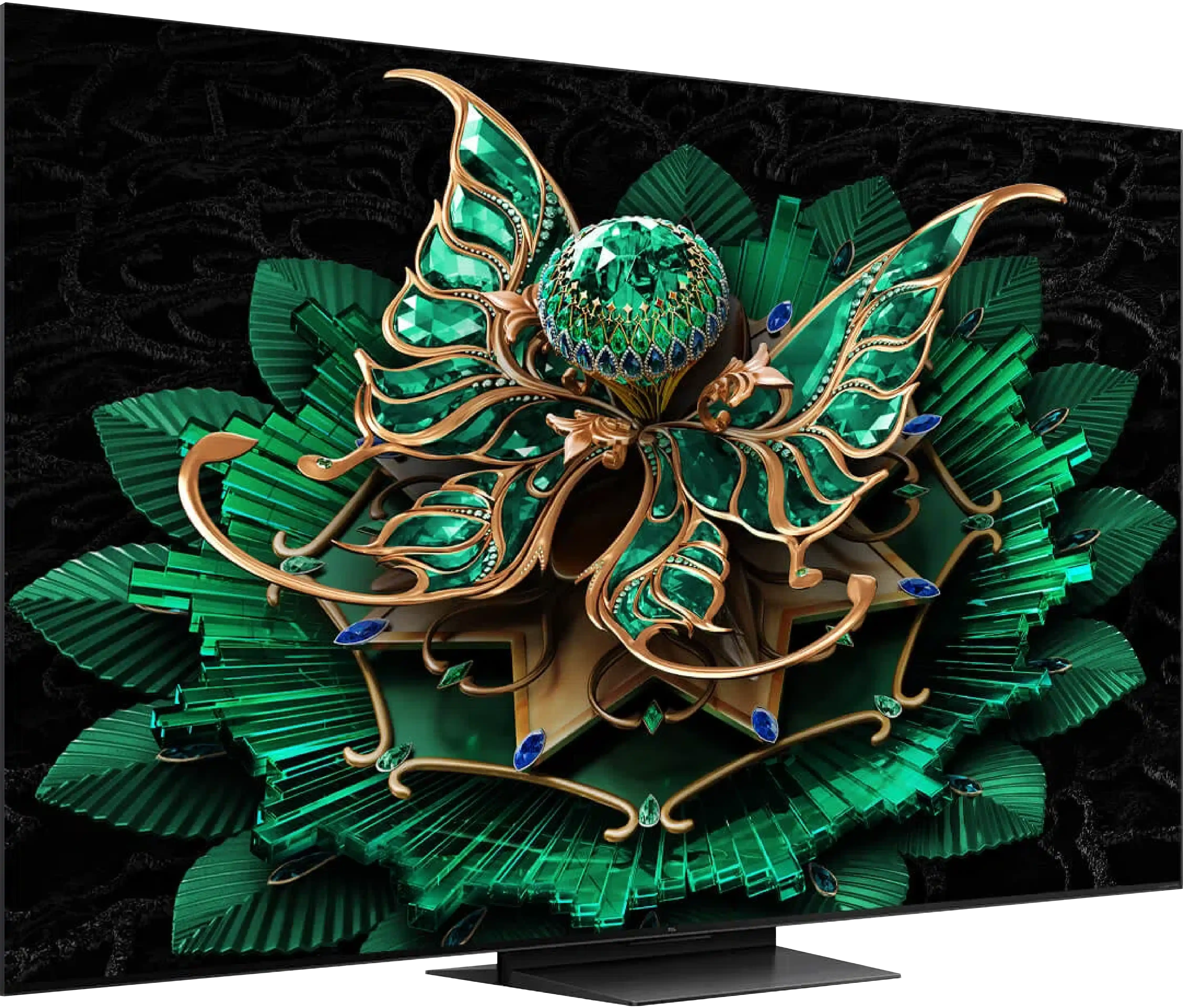

Panel type: LCD VA
Resolution: 3840x2160
System: Google TV
Model year: 2025
Complete the survey to find out the result

Panel type: WRGB OLED
Resolution: 3840x2160
System: Titan OS
Model year: 2025
Complete the survey to find out the result

Overall rating
7.2
7.5
Movies and series in UHD quality
6.7
8.0
Classic TV, YouTube
6.5
8.6
Sports broadcasts (TV and apps)
6.6
8.4
Gaming on console
8.5
9.2
TV as a computer monitor
8.4
7.6
Watching in bright light
6.1
4.8
Utility functions
7.3
5.5
Apps
9.6
6.7
Sound quality
7.0
7.0
Complete the survey to find out what fits your preferences
Advantages
Very good black - VA panel with a large number of Mini-LED zones
High brightness in HDR - over 1000 nits
Excellent for gamers - HDMI 2.1, low input lag, VRR, ALLM, etc.
Good motion smoothness - 144Hz panel
Supports multiple HDR formats: HDR10, HDR10+, Dolby Vision
Google TV operating system with access to a vast array of applications
Pleasant sound from built-in speakers
Excellent picture quality typical of OLED – perfect black, infinite contrast
AmblightTV system
Support for multiple HDR formats including Dolby Vision and HDR10+
Great picture quality after calibration
Decent viewing angles
Excellent motion smoothness – 120Hz OLED panel!
Many features for gamers: VRR, ALLM, Dolby Vision Gaming
Low input lag
4 HDMI 2.1 ports!
Disadvantages
Google TV can operate with minor stutters
No USB recording and PiP functionality
TitanOS has very few applications and has annoying bugs
The remote control works on infrared
Not the best upscaling quality
Average reflection suppression – the screen behaves like a slightly dimmed mirror
Our verdict
Philips OLED770 is a television that stands out primarily due to the quality of its picture – the characteristic perfect black and infinite contrast typical of OLEDs make even the most ordinary evening of watching a series feel like a small cinematic experience. After calibration, the colours gain naturalness and coherence, and details in dark scenes are separated from the lights with surgical precision. It is a screen that gives the impression of engaging with premium-class technology, even though formally it is a budget OLED in Philips' portfolio. The second pillar on which the OLED770 stands very firmly is gaming. Here, the manufacturer has really done their homework. VRR works up to 120 Hz, and we have an automatic game mode (ALLM), while input lag in standard HDR10 or SDR modes at 120 Hz can drop to 5 ms – results that will easily satisfy even the most demanding gamers. And finally, the Ambilight system – for many, it is just a gadget, but during longer sessions, it really makes a difference. The colourful LEDs behind the screen dynamically respond to what is happening in the game and can immerse you even further into the virtual world. This is precisely why one could risk stating that the OLED770 is one of the more interesting budget gaming televisions on the market.
However, not everything shines so brightly when it comes to Smart TV... TitanOS is the biggest drawback of this model. Theoretically, it has everything needed: access to applications, AirPlay support, and voice commands. In practice, however, the app list is limited, screen mirroring often does not work at all, and voice search does not support the Polish language. Additionally, the remote control, although well-designed and backlit – works via infrared, which sounds downright anachronistic in 2025. The system is supposedly fast, but it can be irritating due to errors, and instead of encouraging usage, at times it rather encourages us to turn it off. And here we come to the crux: the OLED770 is a television that works great as a screen for films and games, but not necessarily as a multimedia centre for the home. For someone who primarily uses a console, home cinema, or operator's decoder – this will be a well-chosen option. We get a fantastic picture, a full set of modern gaming functions, and of course, the proprietary AmbilightTV lighting system! But if someone is looking for a television that is meant to replace everything and be a multimedia powerhouse, it is better to look towards more expensive Philips models that offer more refined system solutions like GoogleTV.
TV appearance
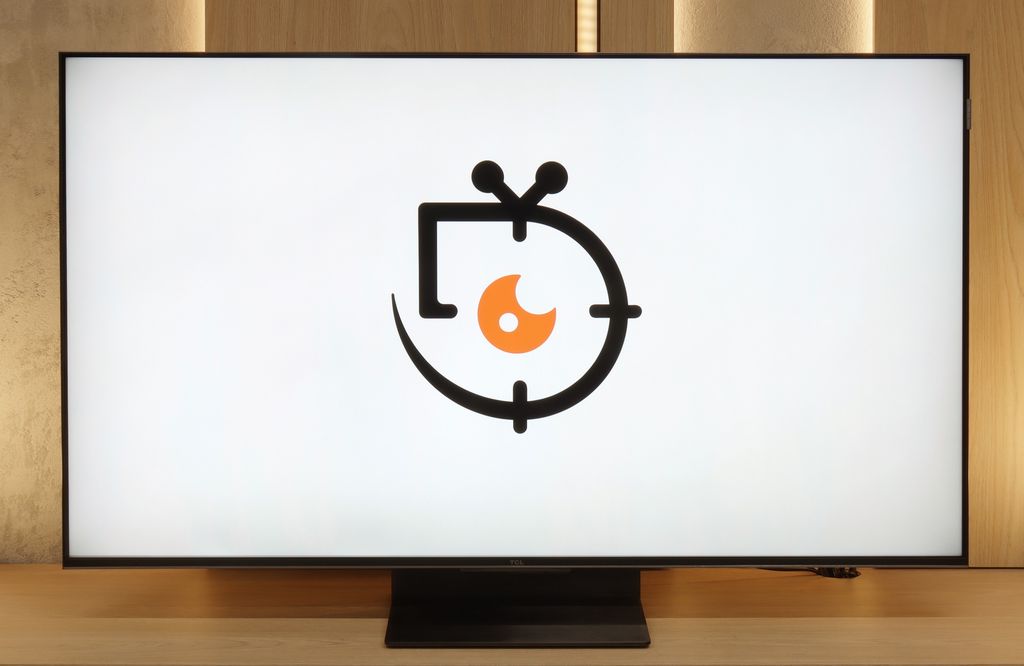
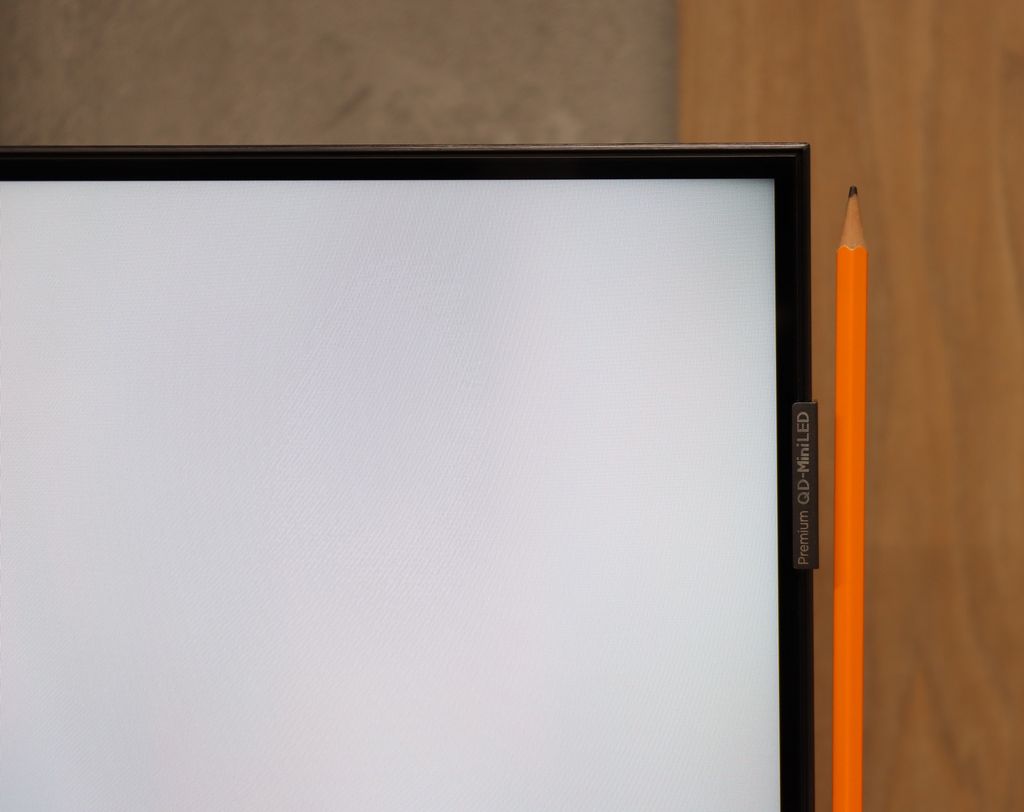
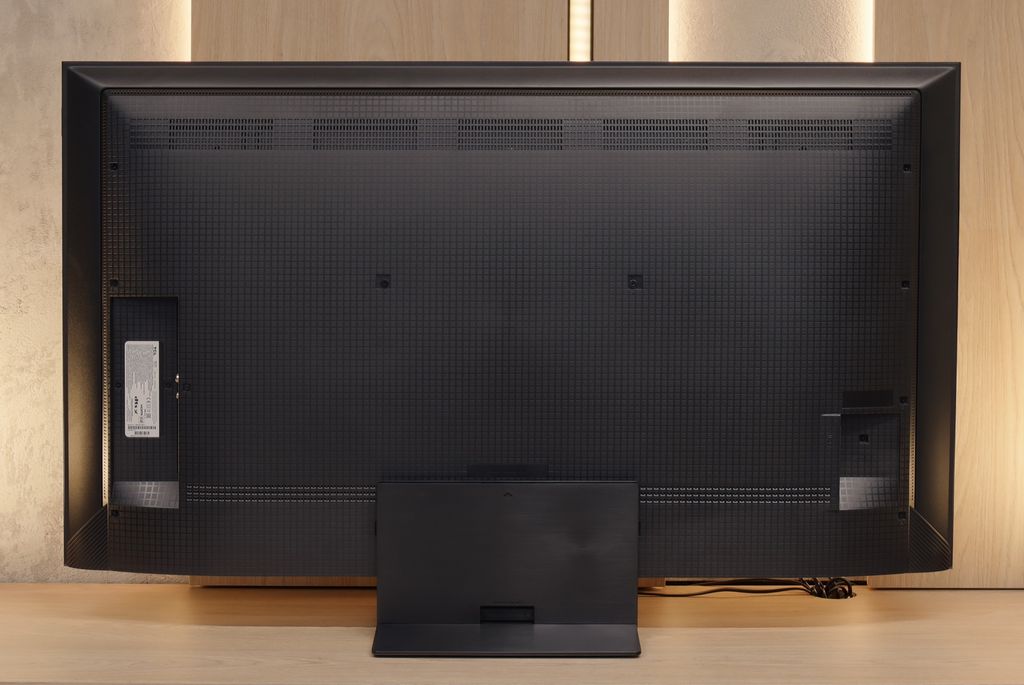
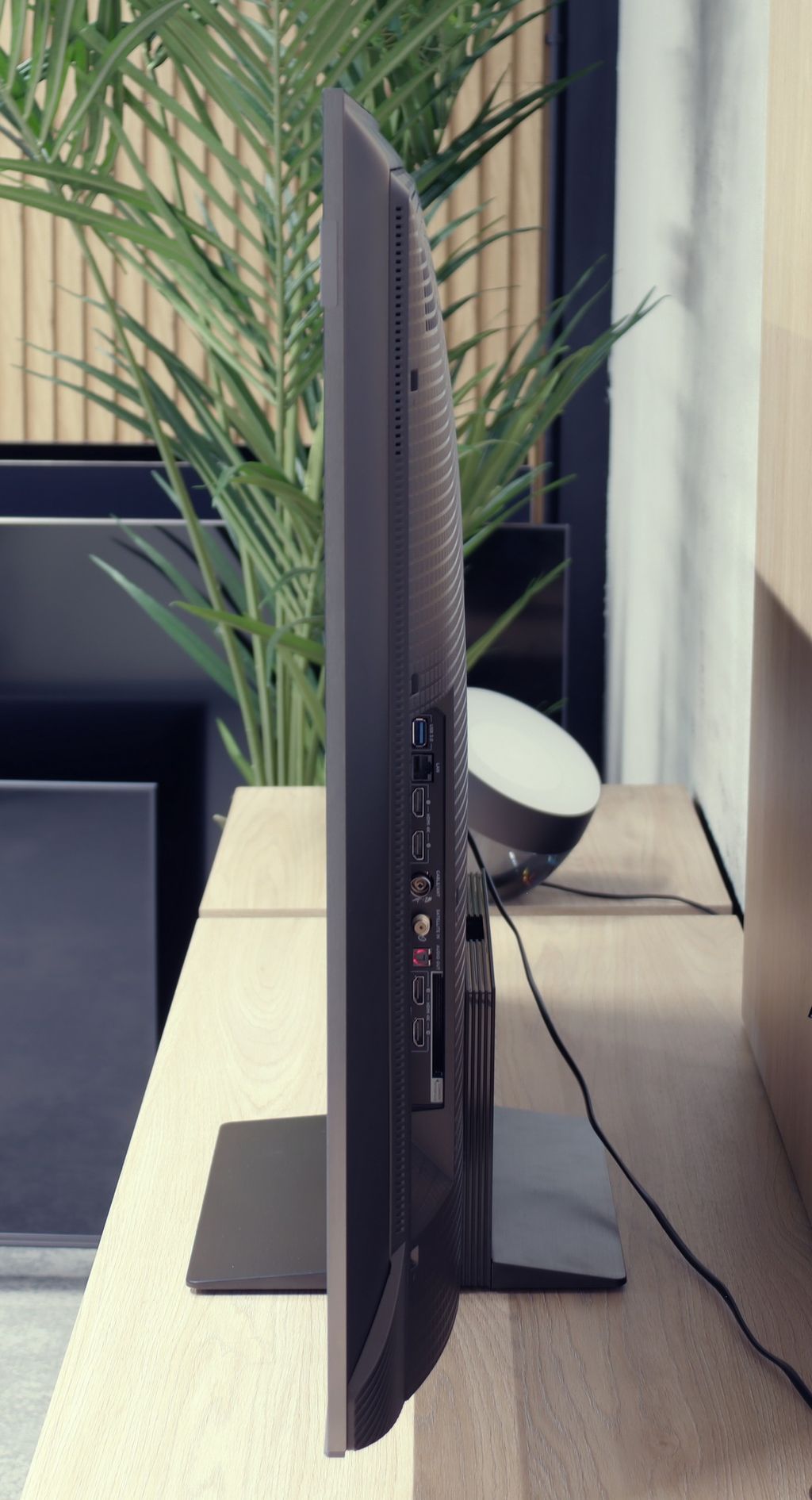




Contrast and black detail
7.1/10
10/10
Local dimming function: Yes, number of zones: 336 (14 x 24)
Contrast:

Result
161,000:1

Result
18,750:1

Result
13,150:1

Result
6,300:1

Result
4,200:1

Result
∞:1

Result
∞:1

Result
∞:1

Result
∞:1

Result
∞:1
Halo effect and black detail visibility:


The 50-inch TCL C7K that we tested surprised us right from the start – it’s the smallest model in the series, yet it comes equipped with a VA panel with MiniLED backlighting and – attention – as many as 336 dimming zones. For comparison: many significantly larger televisions from higher tiers would be eager to boast such a number. Here we have it in the 50-inch version. Sounds promising, doesn’t it? So how does this translate into real movie-watching experiences? In the vast majority of tested scenes – very well. The contrast was high enough that it reached even six-digit values in measurements, which practically means very deep blacks and well-separated highlights. In scenes from films like The Revenant or Oblivion, the effect was impressive, matching the best LCD screens in this class.
However, not everything went perfectly. Despite the impressive number of zones, managing them was not always exemplary. In more complex scenes, where small light sources or a high level of detail appeared, the television had issues with the so-called halo effect (a glowing halo around bright objects) or overly aggressive dimming of the image. In such situations, contrast could either collapse due to overexposure of certain zones or, conversely – details in bright areas disappeared because the zones suppressed the light too much. Nonetheless, it is worth noting that in the vast majority of scenes, the contrast was more than satisfactory. And taking into account the size of the television and the price, the final effect will satisfy not just average users.
In terms of black levels and contrast, the Philips OLED770 does not introduce any revolution – but with OLEDs, it would be difficult to expect one. The organic matrix allows for the complete dimming of individual pixels, which in practice gives us almost perfect black and contrast that reaches infinity. Whether we are watching night scenes in films or scenes full of small bright points, the television precisely separates details from the background. There are no halo effects or other artifacts typical of LCD televisions with local dimming. Choosing an OLED – including the 770 model – provides assurance that in this category, the picture will look stunning.
HDR effect quality
5.4/10
6/10
Luminance measurements in HDR:

Result
1051 nit

Result
185 nit

Result
454 nit

Result
200 nit

Result
836 nit

Result
546 nit

Result
657 nit

Result
726 nit

Result
704 nit

Result
275 nit
Scene from the movie “Pan” (about 2800 nits)


Scene from the movie “Billy Lynn” (about 1100 nits)


Static HDR10


Dynamic: Dolby Vision
Dynamic: Dolby Vision


HDR luminance chart:
Philips OLED770
HDR luminance
Luminance of RGB colors
TCL C7K / QM7K
HDR luminance
TCL C7K is one of the brightest MiniLED televisions in its price range. Under the best testing conditions, the screen managed to achieve over 1200 nits, resulting in impressive, at times almost blindingly bright scenes. And most importantly – this is not just a theory based on measurements. In practice, the brightest parts of films can shine with true cinematic grandeur. Fans of home HDR cinema should be truly satisfied.
The impression is excellent, especially in scenes with large areas of brightness – a white sky, explosions, sun reflections, or magical sunsets can surprise with an intensity of light that is rarely seen in this price range.
However, it gets a bit worse when more challenging scenarios appear on the screen, as described when discussing contrast – that is, images full of details, with small, bright elements on a dark background. In such cases, the C7K often decides to preserve black levels at the expense of brightness. An example? Scenes from the films Sicario 2 or Life of Pi, where small light sources (like a distant lantern) can become less visible, and details in the lights are simply dimmed or blend into the background.
For many viewers, this may be an acceptable compromise – as we achieve deep black levels and a pleasing plasticity of the image. Nevertheless, it is worth being aware that the visibility of small details in bright areas is not this model's strongest suit. It is simply a technological limitation that still exists – even with over 300 zones.
The Philips OLED770 does not attempt to compete with the brightest OLEDs on the market, and it would be difficult to expect that, as it is the entry-level model in Philips' range for 2025. In our measurements, it reached a maximum of around 700 nits, which allows enjoyment of HDR effects in scenes where light appears sporadically – for example, in the flash of headlights or a starry sky. In such moments, the image can truly be stunning. However, it is different when there are more bright elements on the screen. The television, like many cheaper OLEDs, limits luminance in those situations, causing the entire image to noticeably dim. This was best observed in a scene from the film The Meg, where the sun comes out behind an oil rig – the brightness then dropped to around 250 nits, which is almost three times less. The HDR effect remains pleasant to the eye, but it is worth being aware that this model performs best in scenes with less intense light. Fortunately, the OLED770 has a trump card – the coverage of the DCI-P3 colour gamut is as high as 99%, so colours in films and games are vivid and very close to what the creator intended to convey.
Factory color reproduction
6/10
6.2/10
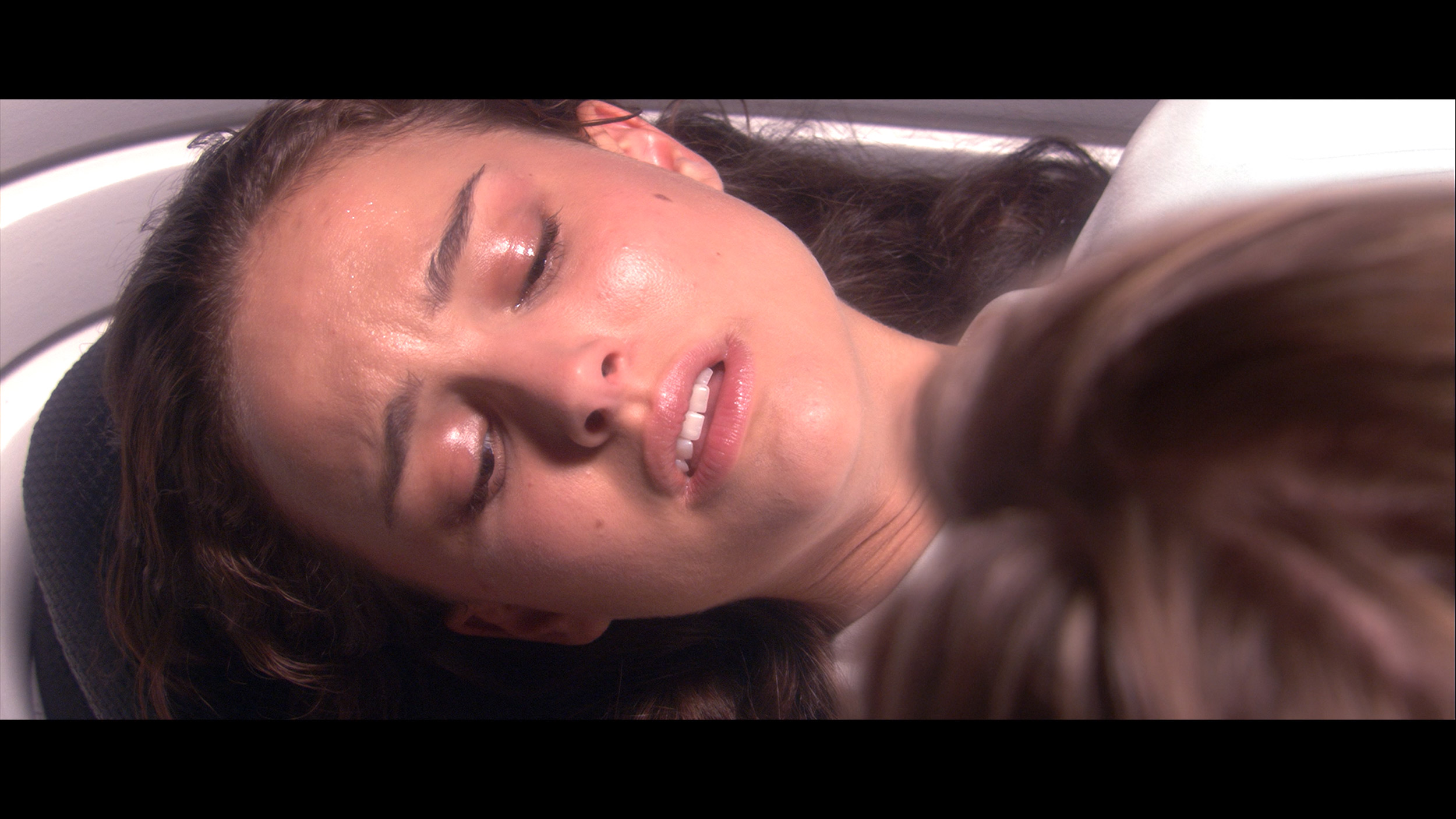
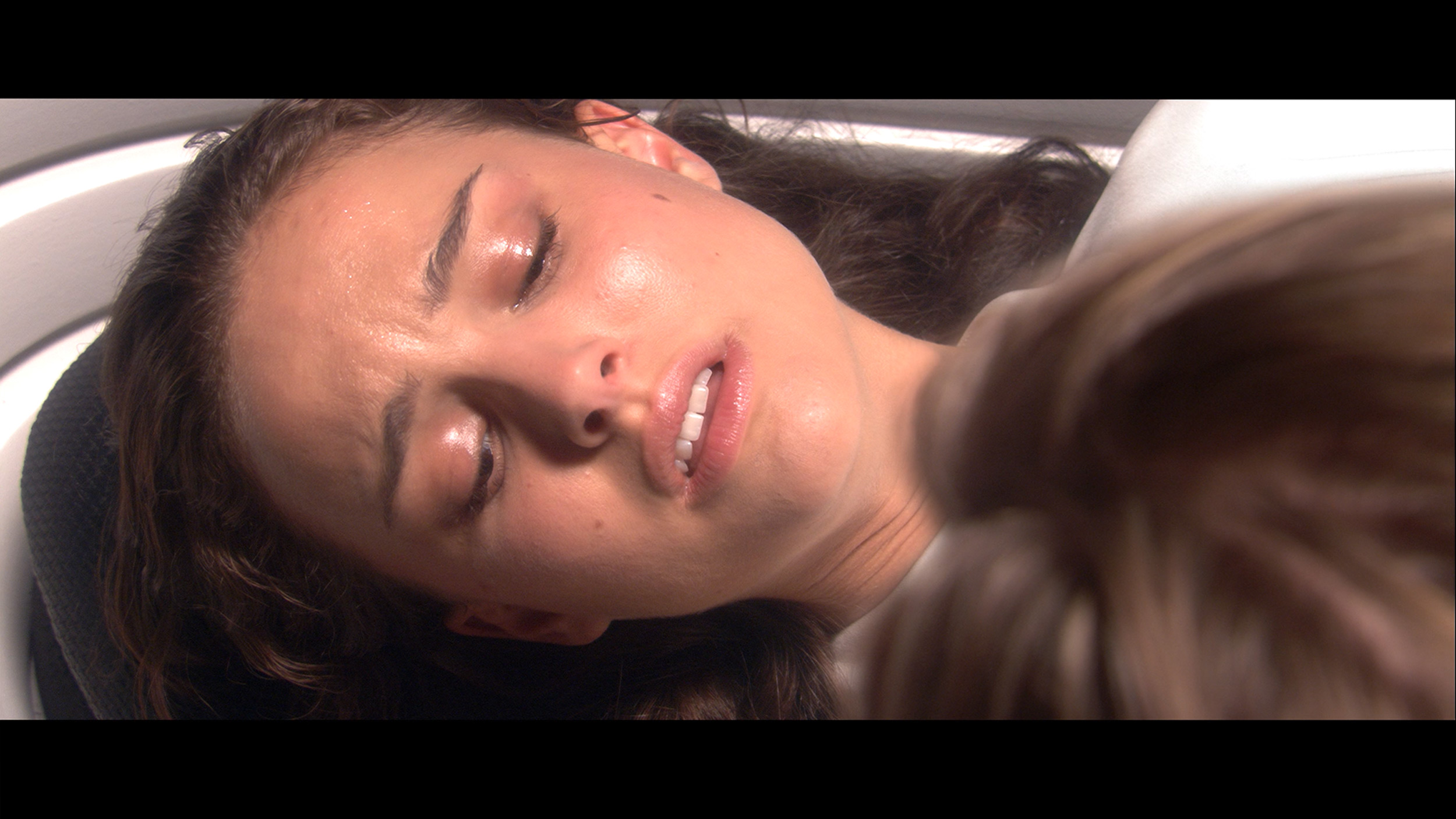
Factory Mode
After calibration


Factory Mode
After calibration
A new feature in TCL televisions for 2025 is the long-awaited Filmmaker mode, which until now has been found in most competing brands. This is great news, as this mode is considered to be the truest to the original vision of the creators and is often recommended by enthusiasts of good picture quality. Unfortunately, as is often the case, the mere presence of this mode does not guarantee perfection. The Filmmaker mode in the TCL C7K is not without its flaws. There can be criticism of the incorrect white balance, particularly a slight dominance of blue, which resulted in cool, somewhat greyish skin tones. But that was not the biggest issue. The main complaint was the excessive brightness exposure, which is clearly visible on the gamma and EOTF graphs. The image was simply too bright, at times even blown out, which affected not only the texture of scenes but also the overall viewing experience. Some details were simply lost, and the entire image looked as if someone had slightly overcooked the brightness slider. As always, we decided to check what could be extracted from this after calibration. And that’s where it started to get really interesting…
The first measurements already show that the factory settings of the Philips OLED770 have quite a lot to improve even in Filmmaker mode. The white balance chart clearly shows a lack of blue, resulting in a slightly yellowish tint to the image. In practice, the white is not snowy but leans towards warmer tones – which some may even appreciate, but from the perspective of accuracy, this is a deviation from the norm. The gamma, on the other hand, tends to the darker side – the average value is around 2.6 instead of the reference 2.4. In the midtones, the image appears subdued and more saturated, which may seem too "filmic," but detracts somewhat from naturalness. However, the most issues are evident in colour reproduction. The average error is relatively high, and some colours – particularly shades of grey – deviate significantly from what one should see. In everyday viewing, this means that sometimes colours may look less natural than we would like.
Color reproduction after calibration
7.5/10
9/10




After calibration, the TCL C7K showcased itself in a really good light, especially when it comes to SDR content. We managed to precisely tune the white balance, colour gamut, and brightness characteristics to the point that colour errors on the ColorChecker palette dropped below a value of 2. For the uninitiated – this is nearly a perfect result, which means that the image is very close to what the creators intended. Unfortunately, the situation was worse with 4K HDR content. Although we managed to gently stabilize the white balance and correct its previous errors, it was still evident that the television has certain "MiniLED traits," especially in brightness management. When we checked how the C7K handled the EOTF curve on actual film scenes, rather than just on synthetic test patterns, it turned out that the screen still tends to slightly brighten the entire image. This impacts the overall experience – blacks lose some depth, and the image becomes less contrasty than it should be. Despite these minor shortcomings in HDR content, the overall reception of materials – especially in SDR – is truly very good. After calibration, the C7K can display an image that can compete successfully with much more expensive models. Good colour tuning, natural skin tones, and pleasant brightness make movie sessions and everyday viewing of content more than satisfactory.
The Philips OLED770 from the outset signalled that it harboured significant potential, but in its factory settings, it was difficult to see this fully. The picture was often too warm, and some colours appeared to have lost their naturalness along the way. Calibration, however, revealed that it is a very responsive television – it reacted to every adjustment and almost immediately unveiled another layer of its capabilities. The white balance could be set in both SDR and HDR to eliminate the yellowish tint and introduce a neutral, clear white. The gamma stabilised closer to perfection, allowing midtones to regain their naturalness, and shadows stopped being artificially darkened, perhaps even with a slight brightening effect. The result was obvious... Films were watched with greater ease; the picture had cinematic depth, but without the feeling that something was exaggeratedly darkened. However, the most interesting aspect was the work on colours. Factory errors were not dramatic but slightly noticeable – skin tones were sometimes too warm, and grey didn’t always have the shade we expected. After calibration, the error values dropped to around 2, and in many cases even below 1. This is certainly a level lower than the threshold of human perception. In other words, after correction, the colours finally "clicked" into place. Looking at the screen, we had the impression that the television had begun to speak with its full voice. Like an instrument that has finally been well tuned.
Smoothness of tonal transitions
8.6/10
7.6/10












The TCL C7K handles colour gradation very well – in most of the tested scenes, tonal transitions were smooth, and colours blended together without visible outlines or the artificial "blot" effect. In everyday use, it's hard to find anything to criticise – the picture looks natural, without annoying transitions or digital artifacts. Certain limitations only arise in very dark tones – particularly in a heavily muted grey palette, where the television may struggle to reproduce the ideal gradation. But this is absolutely understandable, as even many significantly more expensive models in this regard simply falter. Fortunately, these situations are rare and do not significantly impact the overall impression.
In this category, there is a clear improvement compared to last year's Philips models. The OLED770 handles colour gradation significantly better, and strongly visible transitions or artificial bands appear less frequently than before. Interestingly, we achieved the best results in dark scenes – where most televisions, especially those with WOLED panels, tend to struggle the most. A good example is the shot of an actor floating in red water – the transition from intense red to black looks nearly perfect here, without the typical "stair-stepping." The situation is somewhat worse in bright parts of the image. With extremely bright gradients, especially close to white, the television struggles to maintain smoothness. This can be observed in a scene from the film Kingsman, where subtle sunrise bands appear in the background of a bright sky with the sun instead of a smooth blur. Fortunately, these are relatively rare situations, and in everyday viewing, the OLED770 performs very solidly and does not disrupt immersion as was the case with last year's models.
Image scaling and smoothness of tonal transitions
5.5/10
7/10
Smooth transition function
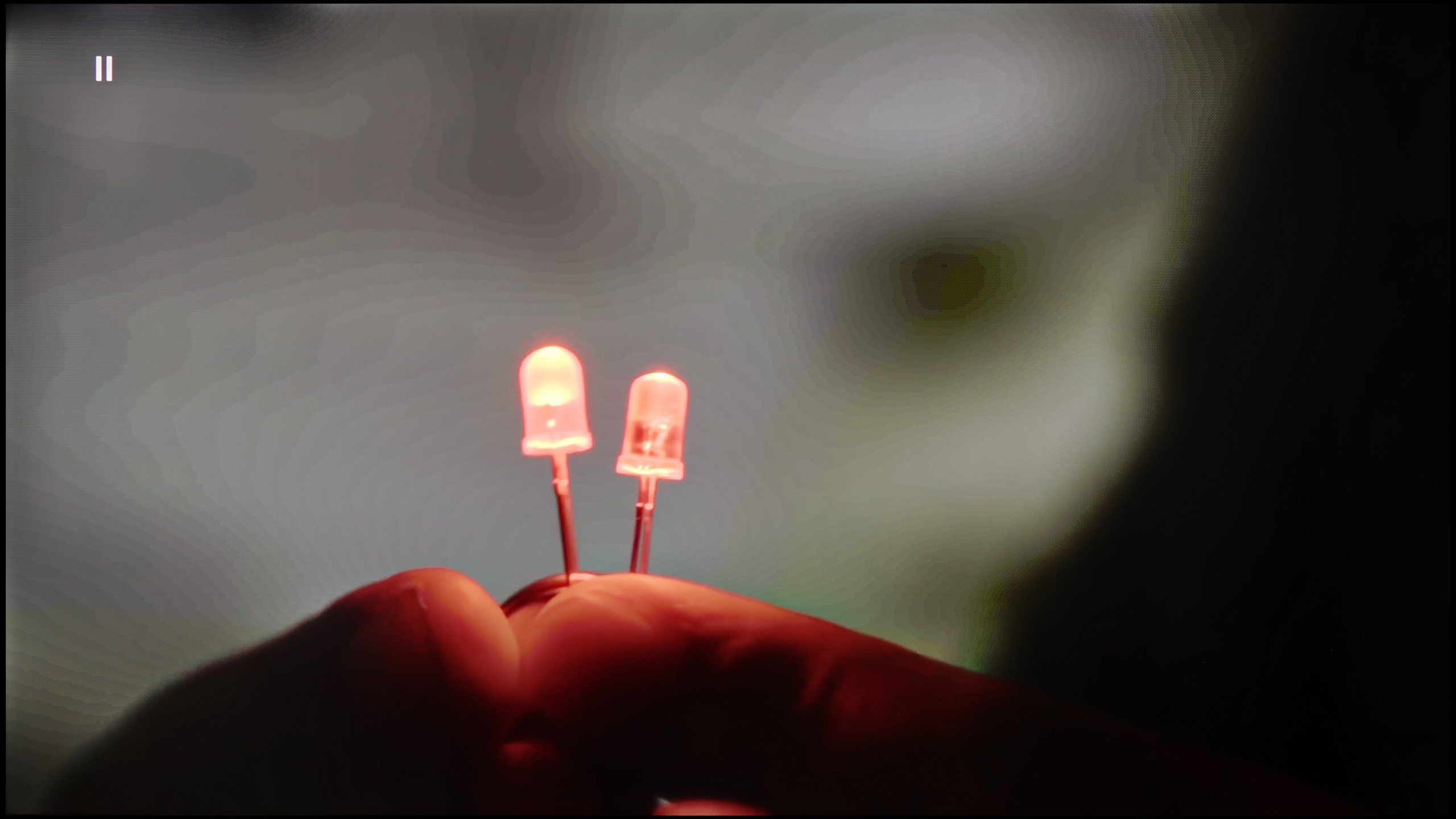

Image without overscan on the SD signal


TCL C7K is equipped with a feature that, according to the manufacturer, is meant to smooth out unwanted colour transitions – a sort of rescue for less successful tonal shifts. It is called "Gradual Smoothing" and… well, it sounds ambitious, but in practice it works very poorly. Regardless of whether we set it to a low or high level, the difference is minimal. Worst of all, the feature can cut out elements from the picture that should be there. Fortunately, film grain remains untouched, so at least it doesn’t smooth everything indiscriminately, but still – it’s better to simply turn this option off.
When it comes to scaling lower resolution content, it is somewhat better. SD and HD materials look quite decent, although at times we had the impression that the image loses sharpness and becomes too soft – as if something took away its definition. Fortunately, with very low sources (e.g. 576p), there was no overscan effect, meaning the picture was not artificially cropped – everything fit on the screen as it should.
The issue of the aforementioned colour banding can largely be mitigated thanks to the 'distortion reduction' feature, which is an algorithm for smoothing tonal transitions in Philips. It performs best at a low setting – effectively eliminating unwanted colour bands while not introducing strange artefacts or losing image detail. This is one of those features that is truly worth leaving switched on.
The situation is somewhat worse regarding upscaling. The image from a lower resolution can be too soft, while in some areas, characteristic 'jaggies' appear. The impression is that the algorithm is trying to reconcile two conflicting directions – smoothing and sharpening – and ultimately fails to find a happy medium. As a consolation, it can be added that the television has no issues with overscan, meaning it does not cut off the edges of the image, which sometimes occurs in other competing models.
Blur and motion smoothness
8.1/10
8.4/10
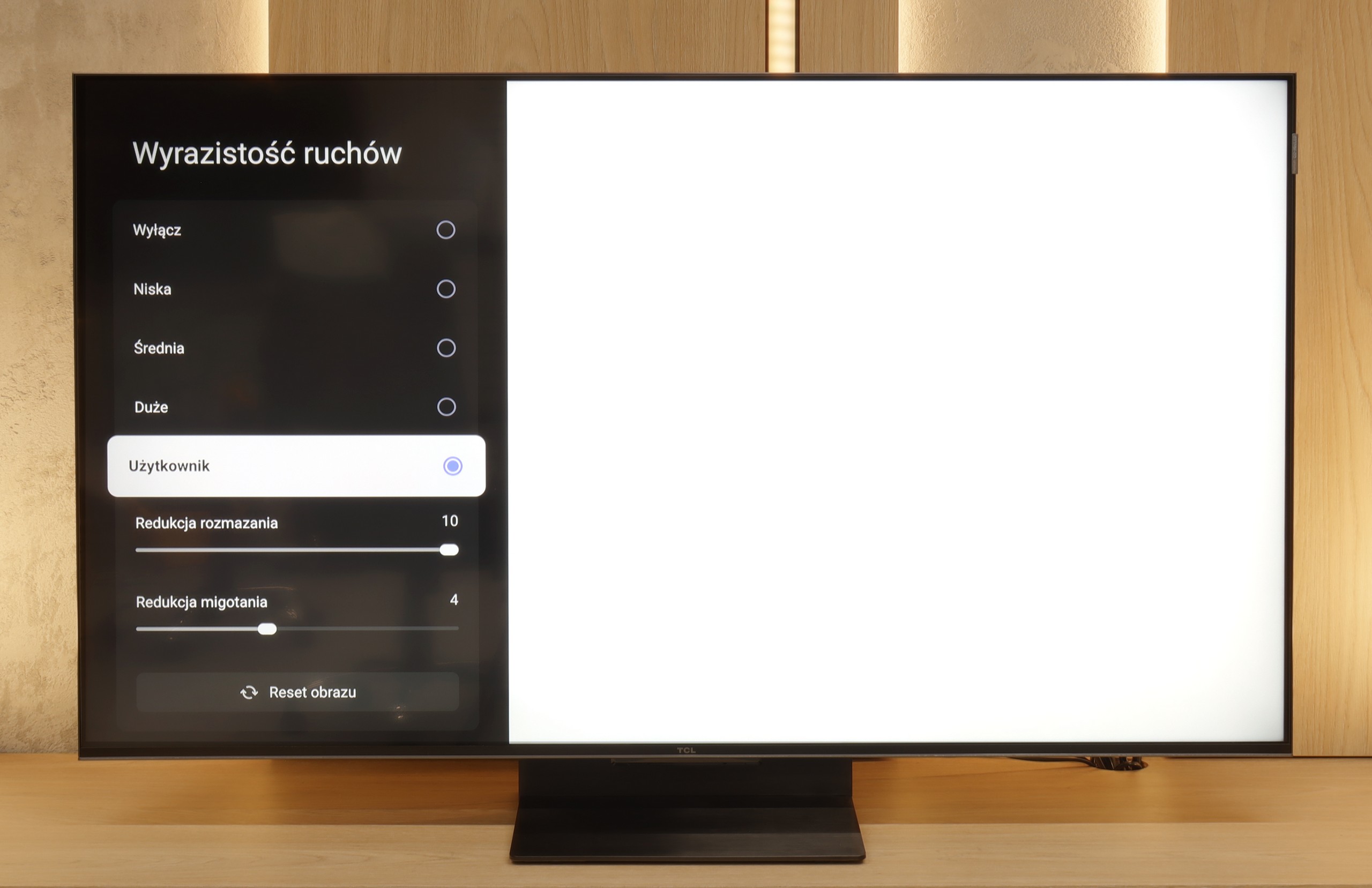

Blur (native resolution, maximum refresh rate):


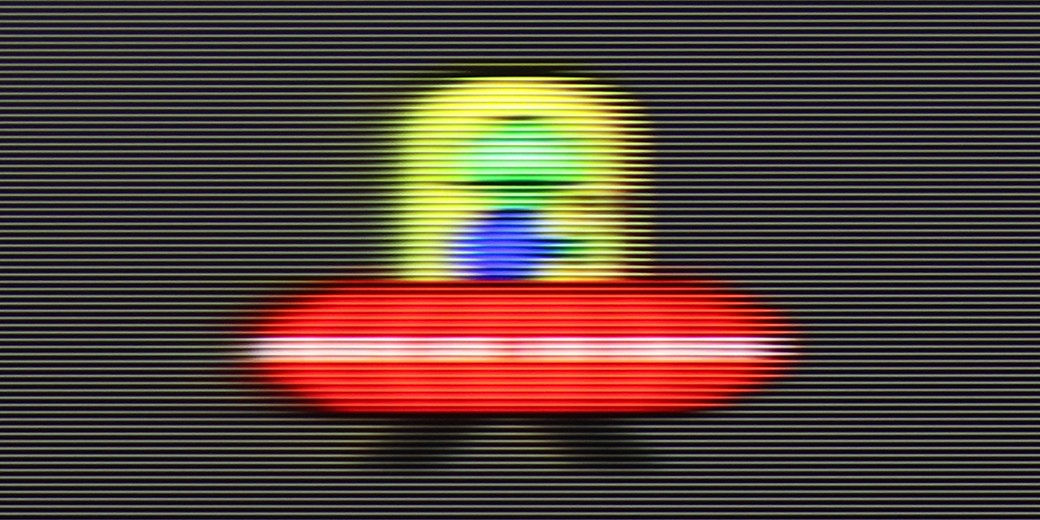



Blur (BFI function enabled):



Smużenie (4K 144Hz):



Smużenie (4K@144Hz):



The TCL C7K handles motion fluidity really very well. The matrix used in it offers a refresh rate of 144 Hz, which in itself suggests that this television is more than just a regular "60 Hz" panel. Furthermore – if we connect the C7K to a computer and set the resolution to Full HD. But we'll write more about this in the paragraph about gamers and PC collaboration. Returning to everyday use – both sports and films look very good here. Thanks to the fast panel and well-functioning motion smoothing, the C7K is great for watching matches, but also for movie screenings. In the menu, we find two sliders – motion blur reduction and flicker reduction – which allow us to adjust the fluidity effect to our own preferences. At lower settings, we get a more cinematic effect, with slight stuttering motion. At higher settings – the picture becomes more theatrical, fluid to the point of excess. Everyone has their own preferences – anyone can set it to their liking.
The issue of the matrix in the Philips OLED770 is not entirely straightforward. The manufacturer claims a 120 Hz panel, but our measurements showed that the screen can accept a 4K signal even at 144 Hz. That sounds like great news – after all, who wouldn't want an additional mode for PC gamers at this price? However, the reality turned out to be more complex. With 120 Hz content, the television behaves like most OLEDs – the image is absolutely clear, with no trace of ghosting or blurring, making it perfect for both dynamic games and sports broadcasts. The problem only arises at 144 Hz. Unlike models with official support for this frequency, here you can observe the phenomenon known as frame skipping. This means that the television cannot display all the frames – some are skipped, causing motion to lose smoothness, and double contours appear on the screen. The effect resembles the operation of the BFI function, which Philips does not offer in this model anyway.
Console compatibility and gaming features
9.8/10
10/10
- ALLM
- VRR
- VRR range48 - 144Hz40 - 120Hz
- Dolby Vision Game Mode
- Correct implementation of HGIG
- 1080p@120Hz
- 1440p@120Hz
- 4K@120Hz
- Game bar
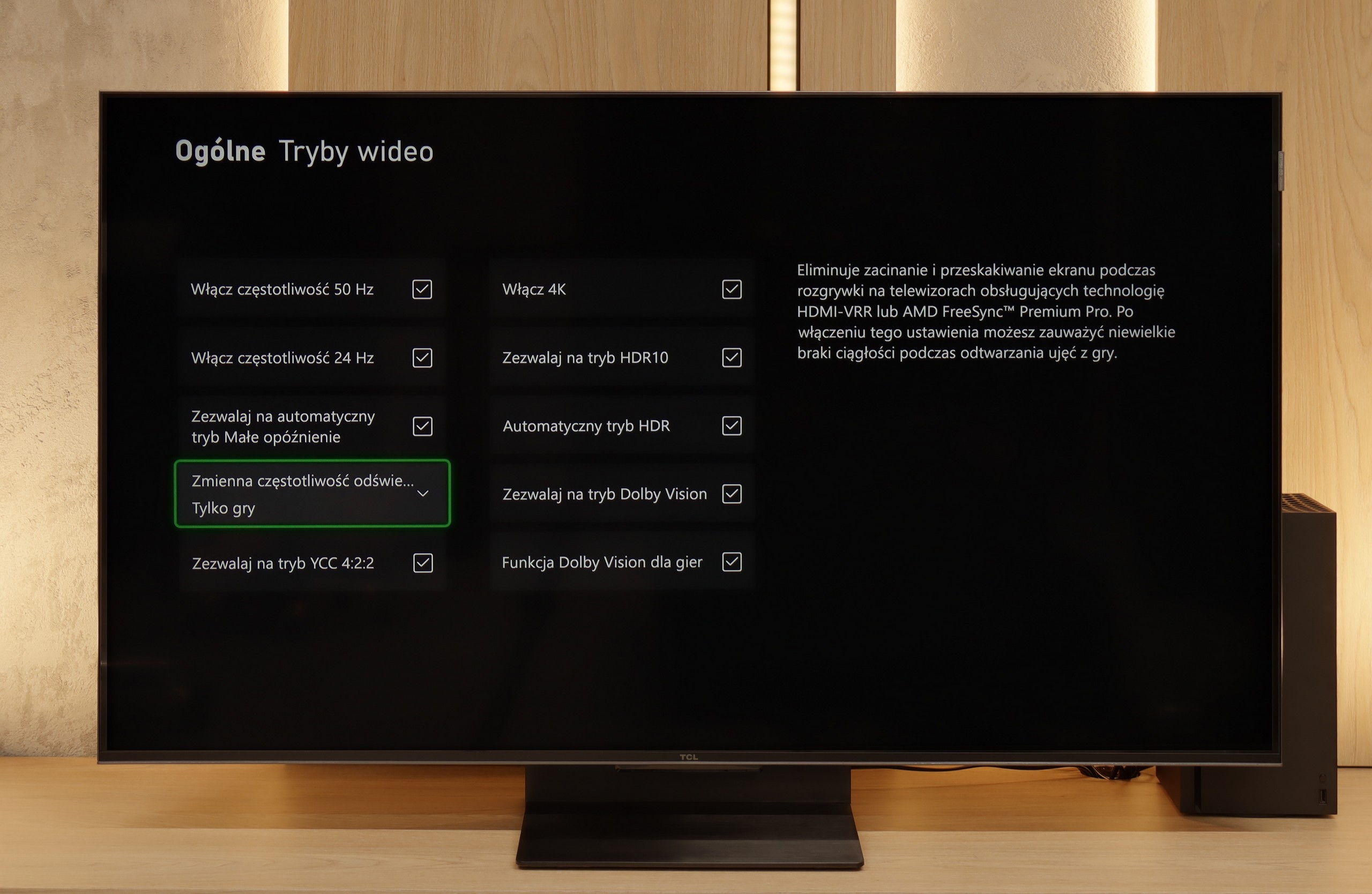

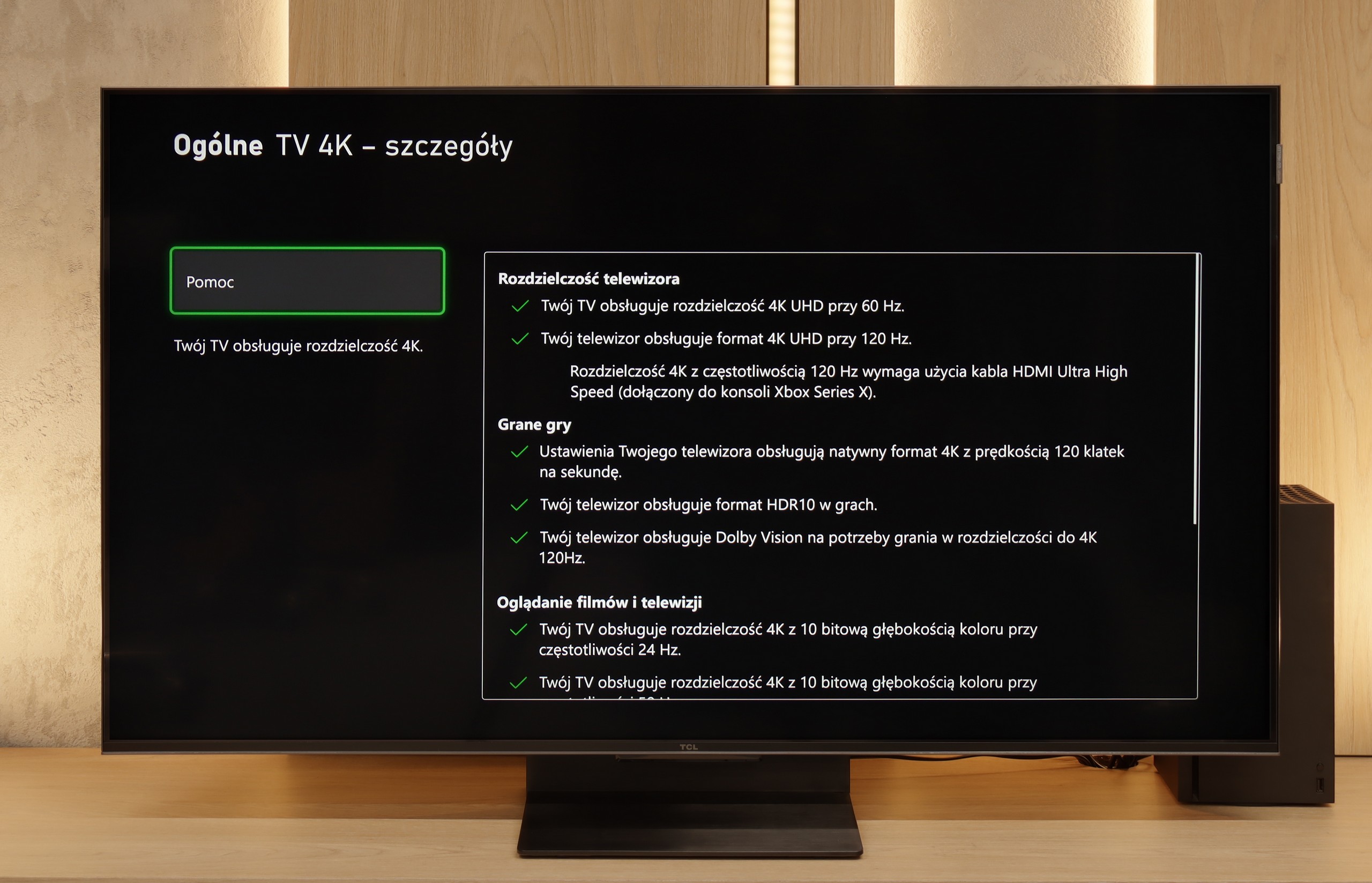

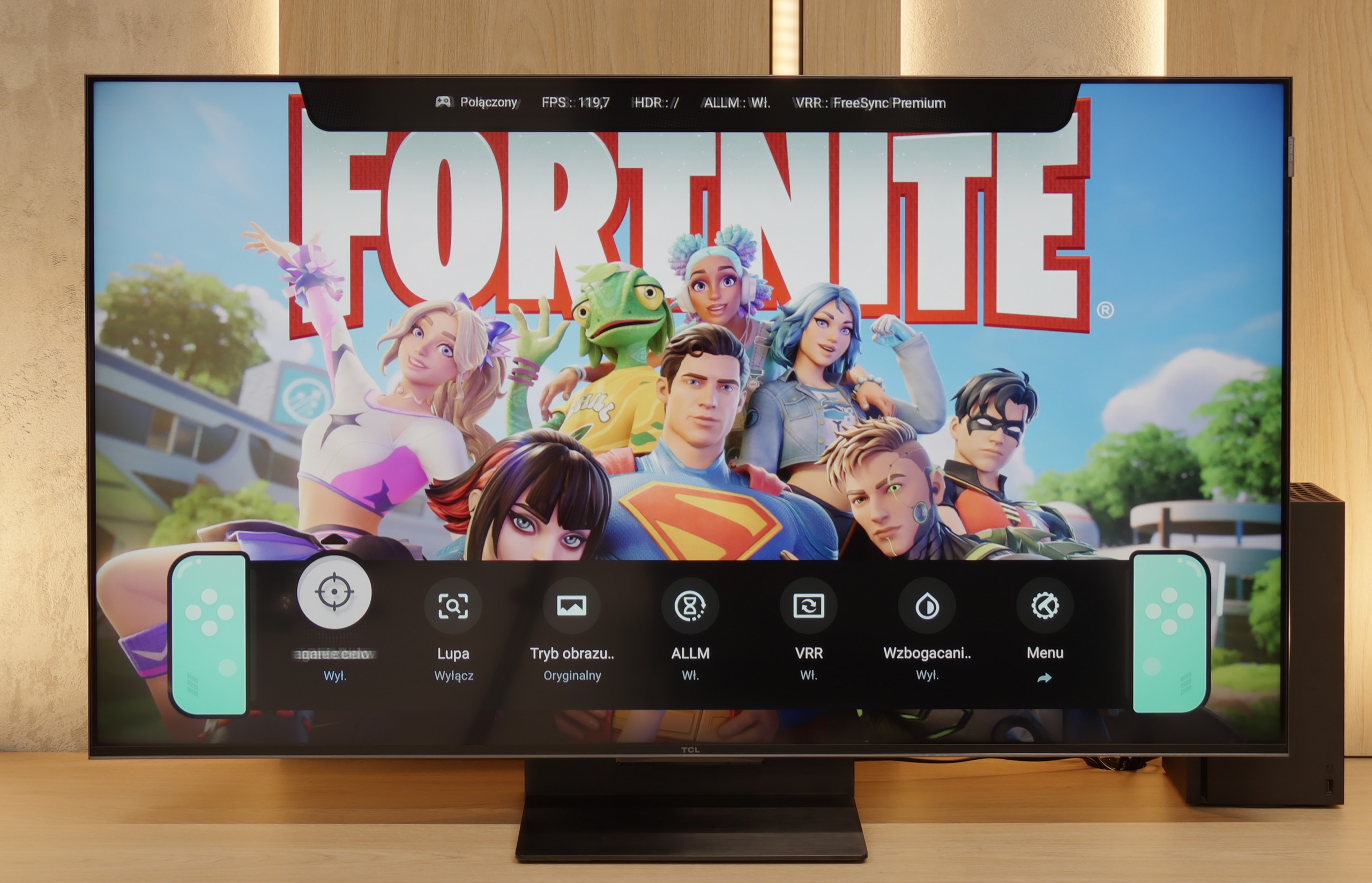

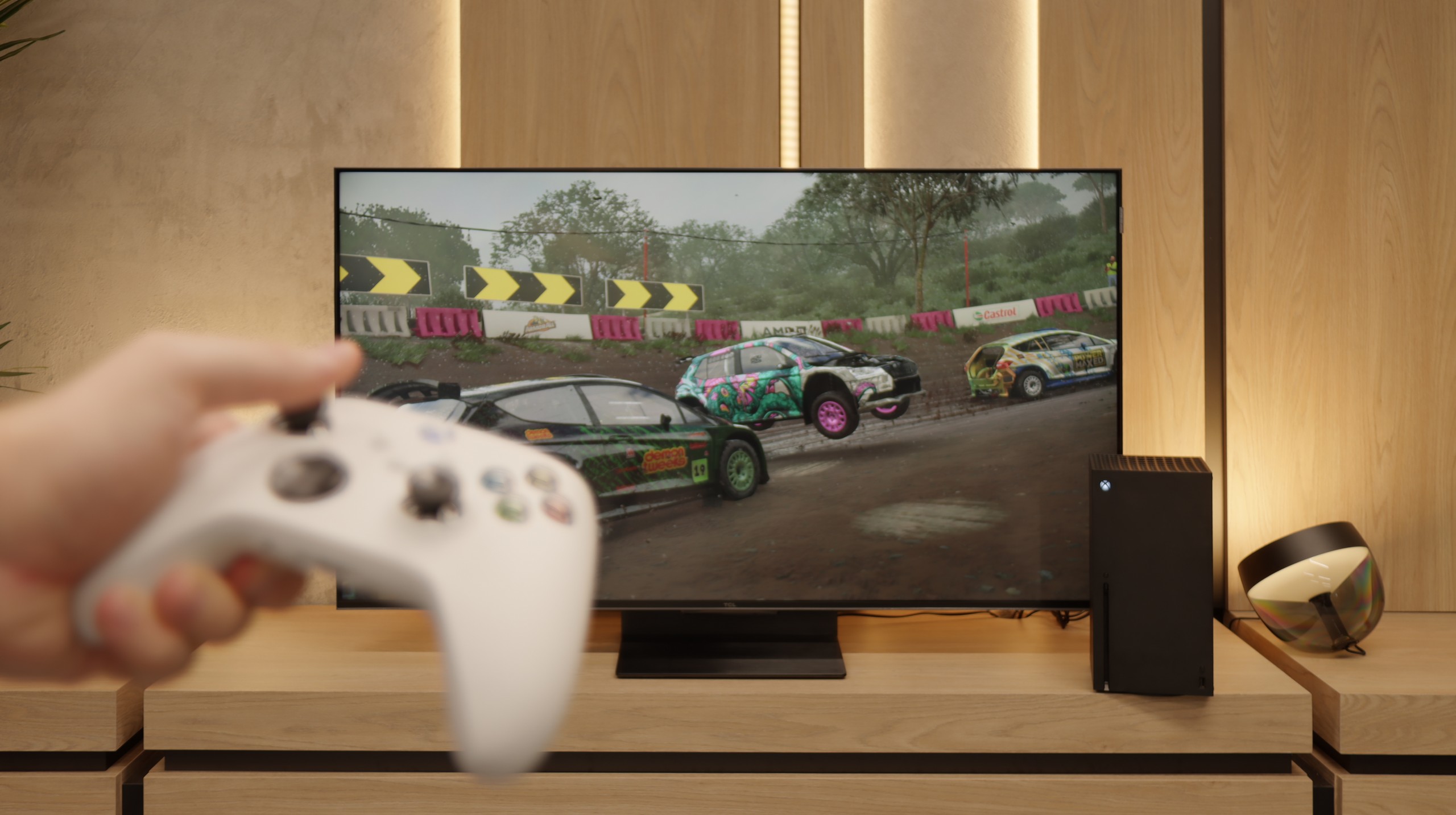

The TCL C7K is a television that on paper appears to be the dream equipment for gamers – and most importantly, it holds up in practice too. To start with good news: there are two full-bandwidth HDMI 2.1 ports, so we can easily connect both a console and a computer, taking advantage of all their capabilities. The panel itself supports a refresh rate of 144 Hz, which gives a significant advantage in dynamic games. There is also a complete set of gaming features: VRR (variable refresh rate), ALLM (automatic low-latency mode), and support for Dolby Vision in games. There is also the HGiG mode, which allows for HDR effects consistent with the creators' intentions. GameBar, an information bar for gamers. It works quickly, looks clear (like a Nintendo console👌), and shows what matters most: the current frame rate, VRR status, and even HDR parameters.
If someone is looking for a television for gaming, the Philips OLED770 is a contender that is hard to ignore. The mere fact that we have an OLED here provides an excellent starting point – perfect black and infinite contrast make evening sessions in atmospheric games look as if they were lifted straight from the cinema. On top of that, there is the Ambilight system, which consists of LEDs on the back of the television that extend the image onto the wall behind the screen. The effect is such that even playing FIFA can look like a small spectacle, and in horror games the atmosphere becomes truly thick. From a technical standpoint, it's also quite decent. The Philips OLED770 supports variable refresh rate (VRR) up to 120 Hz, has an automatic mode for gamers (ALLM), and if someone is using an Xbox Series X, they can also count on Dolby Vision support in games. One must only know that in this mode the input lag is slightly higher than standard, though still at an acceptable level. As a bonus, we get the “Game Bar” panel, which is a special tool bar for gamers. It isn’t the most conveniently designed solution, but it allows you to check key parameters without leaving the game. Overall, this results in a television that, on one hand, has all the essential gaming features, and on the other, can add something unique – Ambilight. And it is this mix of technology and visual effect that makes the OLED770 one of the better screens for gaming at home.
Input lag
9.7/10
9.8/10
SDR
HDR
Dolby Vision
When it comes to delays, the C7K gives no reason for complaints. In games at 120 Hz, input lag is around 10 ms, which means the television responds really quickly. And interestingly – even in Dolby Vision mode, the result is very similar, which is not always the standard. Good job, TCL. At 60 Hz, the lag does increase a bit, but that's completely normal and affects virtually every television with a refresh rate of 120Hz and above. The most important thing is that everything still runs smoothly and there’s no feeling that something is not responding to our actions.
As we mentioned earlier, the only anomaly that was detected during testing is the Dolby Vision Gaming mode. In this setting, the delay can reach up to 30 ms. This is not particularly impressive, and more demanding gamers may wrinkle their noses, but in practice – during casual sessions – the difference will not be strongly noticeable. Standard HDR10 and SDR modes perform much better. For a 120 Hz signal, input lag drops here to a minimal 5 ms, which is an outstanding result and places the OLED770 among the top televisions suitable for fast-paced gaming. In other words, if someone is not insistent on using Dolby Vision on Xbox, the gaming experience will be quick, smooth, and free of unnecessary delays!
Compatibility with PC
8.4/10
7.6/10
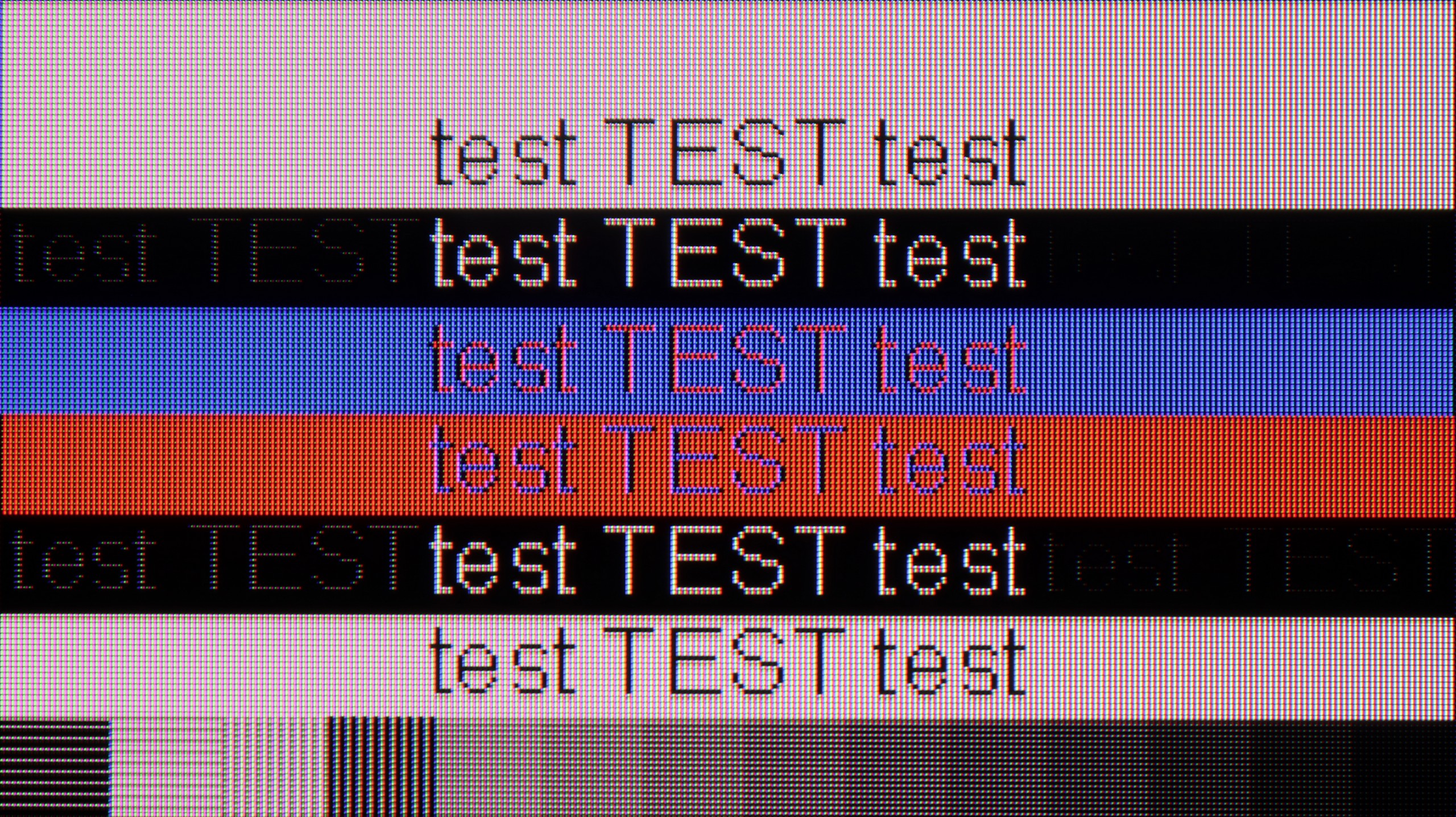

If we are going to connect the C7K to a computer – especially for gaming – there is definitely a lot to play for. We have 4K at 144 Hz, which already sounds great, but if we lower the resolution, the television can even display up to 280 Hz. In e-sports, where every fraction of a second counts, this really makes a difference. On top of that, there is support for G-Sync and FreeSync, so regardless of which graphics card we have – the image will be smooth, without any stuttering or tearing.
However, if we plan to place the C7K on a desk and use it like a monitor, it’s a bit less "rosy." Yes, it supports chroma 4:4:4, so fonts should be sharp, but with very dark letters, there is slight blurriness and dimming of the edges. This is not something that immediately stands out during gaming or watching, but when working with text – it can be distracting. In everyday use – it’s probably nothing to worry about, but if we plan to place a 50-inch screen a meter from our face, it’s worth keeping this in mind.
Philips has learned from previous models and has finally improved the implementation of chroma 4:4:4. This is important news for those planning to connect a television to a computer, as it means no issues with sharpness and readability of fonts. Text appears clear and transparent, so the OLED770 can aptly be called an excellent screen for office work or browsing the internet. Of course, very demanding users may notice some imperfections resulting from the WRGB pixel arrangement typical of WOLED panels, but in practice, this does not significantly impact comfort. The television also performs well in games run from a PC. The panel allows for real refresh rates up to 120 Hz, and with low input lag, it delivers a very smooth image without noticeable stuttering. The only missing features are support for G-Sync and – as we have mentioned – a proper 144 Hz mode, but despite this, the overall performance is really solid. For those looking for a versatile screen for both computer and console use, the OLED770 is a choice that is hard to overlook.
Viewing angles
3/10
7.7/10
There are no surprises here – the C7K has classic viewing angles for a VA panel. That is: sitting directly in front – it’s excellent. The colours look good, the contrast is strong, everything is in place. But just shifting slightly to the side and it starts to get worse – the image loses saturation, blacks turn grey, and the overall impression diminishes a bit. So, if we plan to watch together with a few people or have a sofa that takes up half the living room – it’s worth seating everyone a bit more centrally. You can watch from the side, but don’t expect miracles – it’s simply a characteristic of VA panels.
In terms of viewing angles, the Philips OLED770 presents a very high level typical of OLEDs. The image remains clear and vibrant even when viewing the screen from the side – there is virtually no noticeable drop in contrast or colour fading. In this category, it is only surpassed by QD-OLED panels, which can be found either in very expensive premium models or in one exceptional case – the 55-inch Samsung S85F. However, in everyday use, the differences are difficult to detect, and the OLED770 performs nearly perfectly anyway. It is only at truly extreme angles that a slight degradation of colours can be noticed.
TV efficiency during daytime
6.1/10
4.8/10
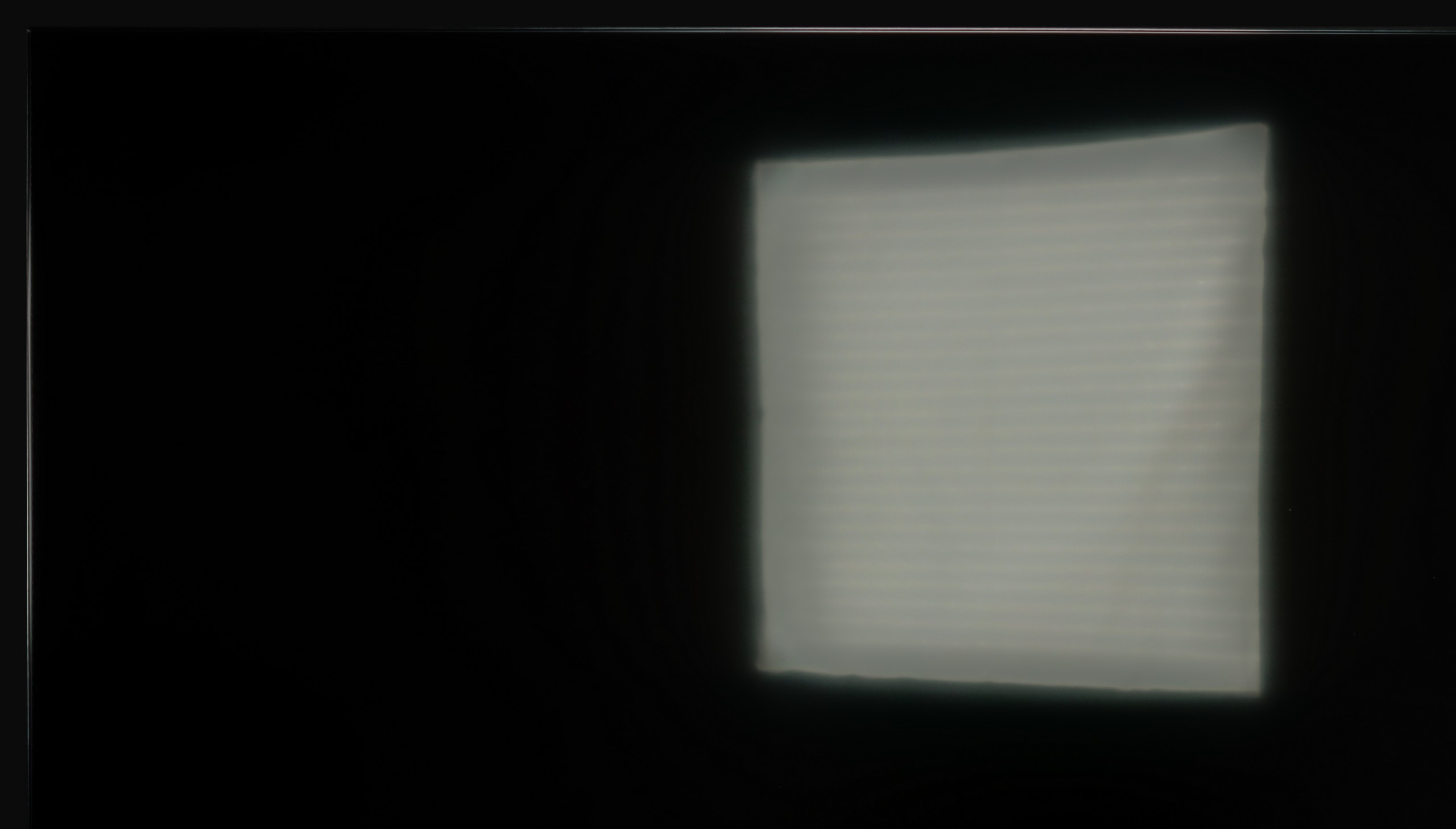



Matrix brightness
Average luminance SDR
Philips OLED770: 249 cd/m2
TCL C7K / QM7K: 475 cd/m2
Fortunately, the TCL C7K performs quite well in bright rooms. The applied panel has a satin finish that effectively suppresses reflections, which means we don't have to worry about lamp or window reflections even on sunny days. Importantly, the colours maintain their intensity and do not wash out, as can happen with weaker matte panels. In terms of brightness, the average for content like YouTube or regular television is slightly below 500 nits. This is not a record-breaking result – for example, the MQLED85 (C765) performs better in this regard. However, for everyday viewing during the day, it should work without major issues, provided we do not plan to place it opposite a south-facing window without curtains.
OLED770 is not one of the brightest televisions, so it is hard to recommend it for very sunny living rooms. In a bright room, its limitations quickly become apparent – the screen reflects light and acts rather like a slightly dimmed mirror. The suppression of reflections is average, and in direct light, the screen performs poorly. Fortunately, the matrix coating does not distort colours, so even during the day, the hues remain natural, and blacks do not dramatically lose their depth. Nevertheless, it is difficult to say that the OLED770 is a television made for bright spaces – it will definitely perform better in a dimmed living room or a bedroom, where its strong points can fully resonate.
Details about the matrix
Subpixel Structure:
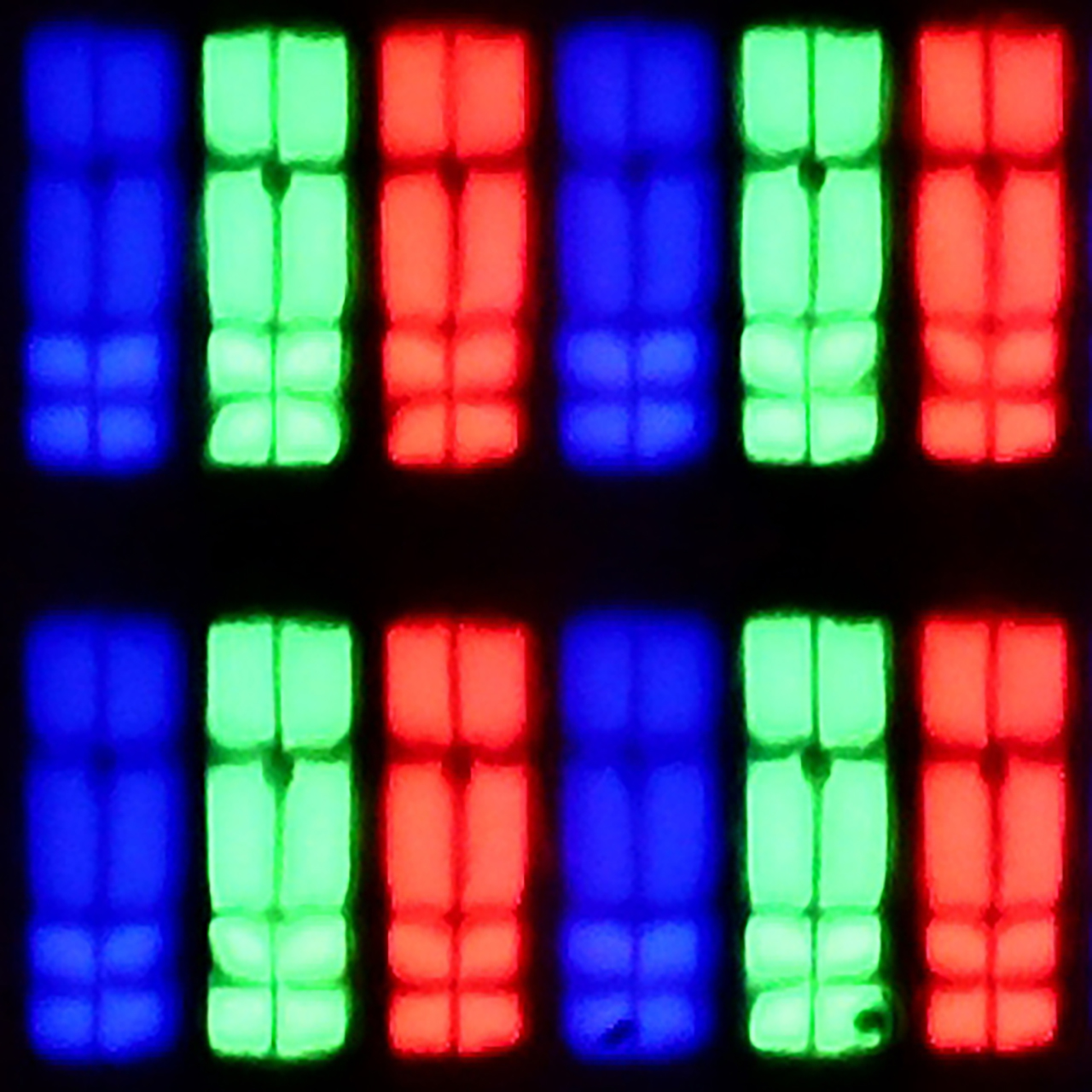

Panel uniformity and thermal imaging:


TCL C7K / QM7K
Philips OLED770
TV features
7.3/10
5.5/10
- HDMI inputs2 x HDMI 2.0, 2 x HDMI 2.1 48Gbps0 x HDMI 2.0, 4 x HDMI 2.1 48Gbps
- OutputsToslink (Optical audio), eARC (HDMI), ARC (HDMI)Toslink (Optical audio), eARC (HDMI), ARC (HDMI), Mini-Jack (Headphones)
- Network InterfacesWi-Fi 2.4GHz, Wi-Fi 5GHz, Ethernet (LAN) 100MbpsWi-Fi 2.4GHz, Wi-Fi 5GHz, Ethernet (LAN) 100Mbps
- TV receptionDVB-T, DVB-T2, DVB-S, DVB-S2, DVB-CDVB-T, DVB-T2, DVB-S, DVB-S2, DVB-C
Classic features:
- Recording to USB (terrestrial TV)
- Recording programming
- Picture in Picture (PiP)
- RF remote control (no need to aim at the screen)
- Backlit remote control
- Teletext
- Audio only mode
- Bluetooth headphones support
- Simultaneous Bluetooth headphones & TV audio
Smart features:
- AirPlay
- Screen mirroring (Windows Miracast)
- Voice search
- Voice search in native language
- Ability to connect a keyboard and mouse
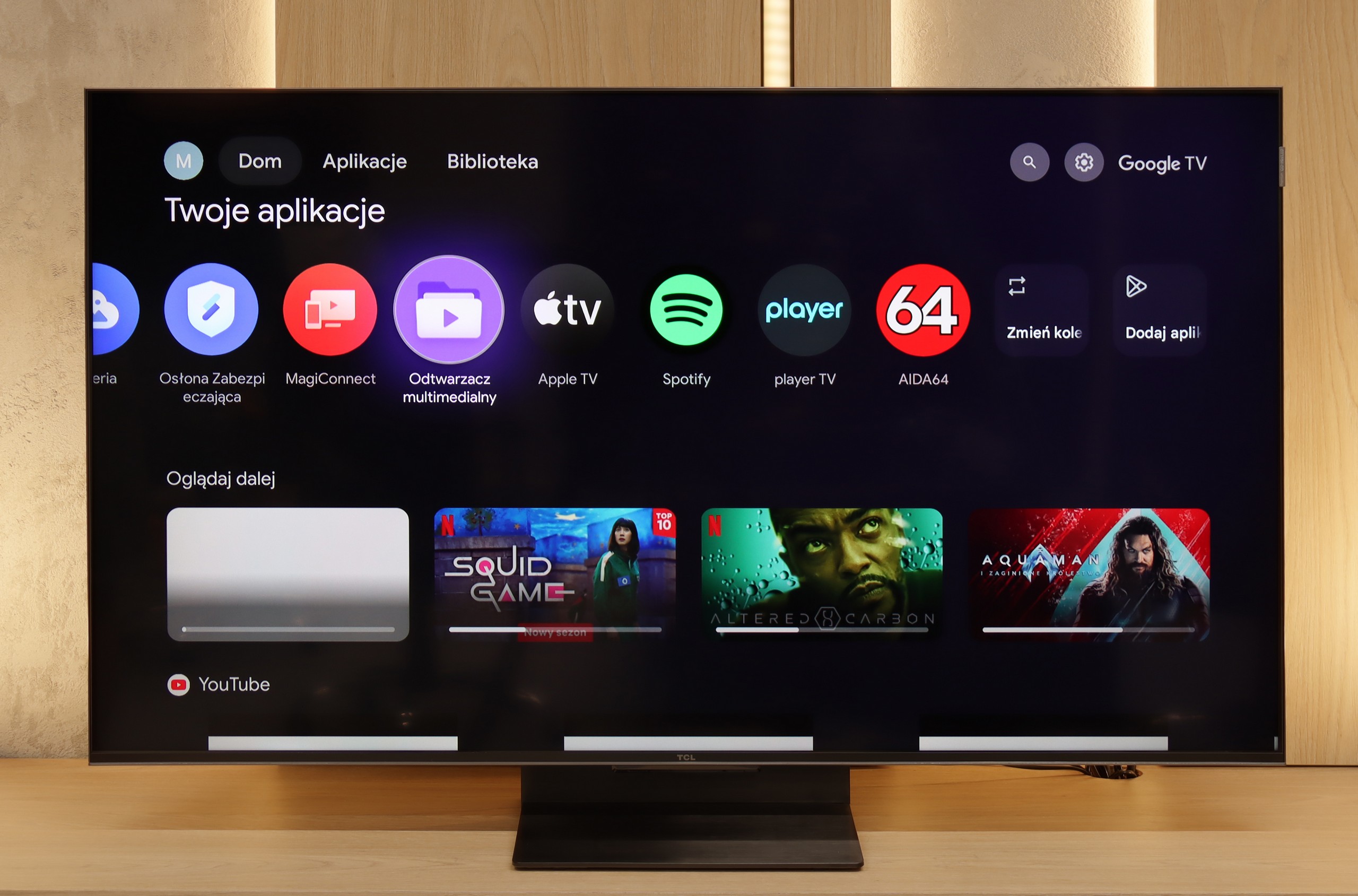
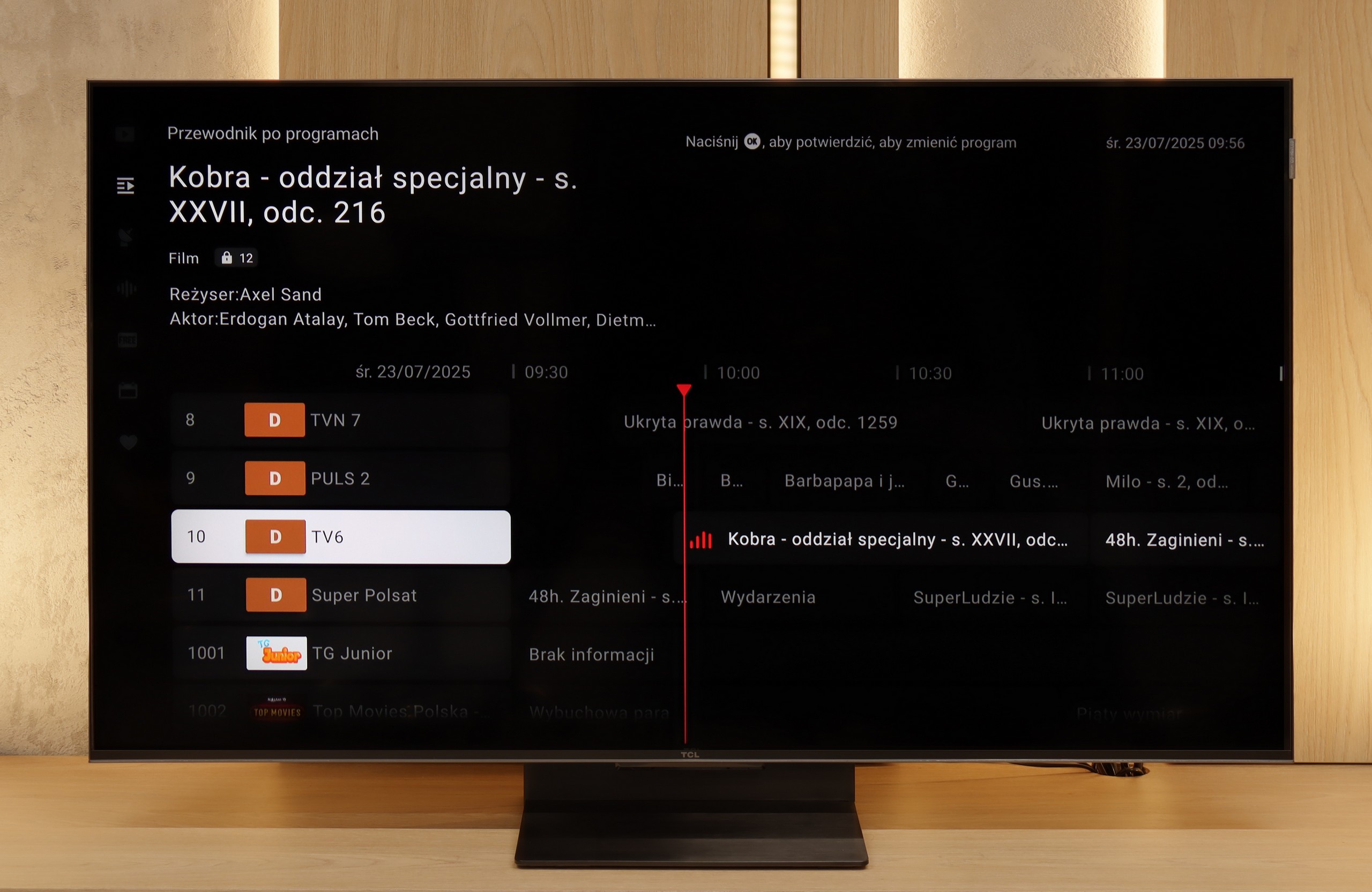
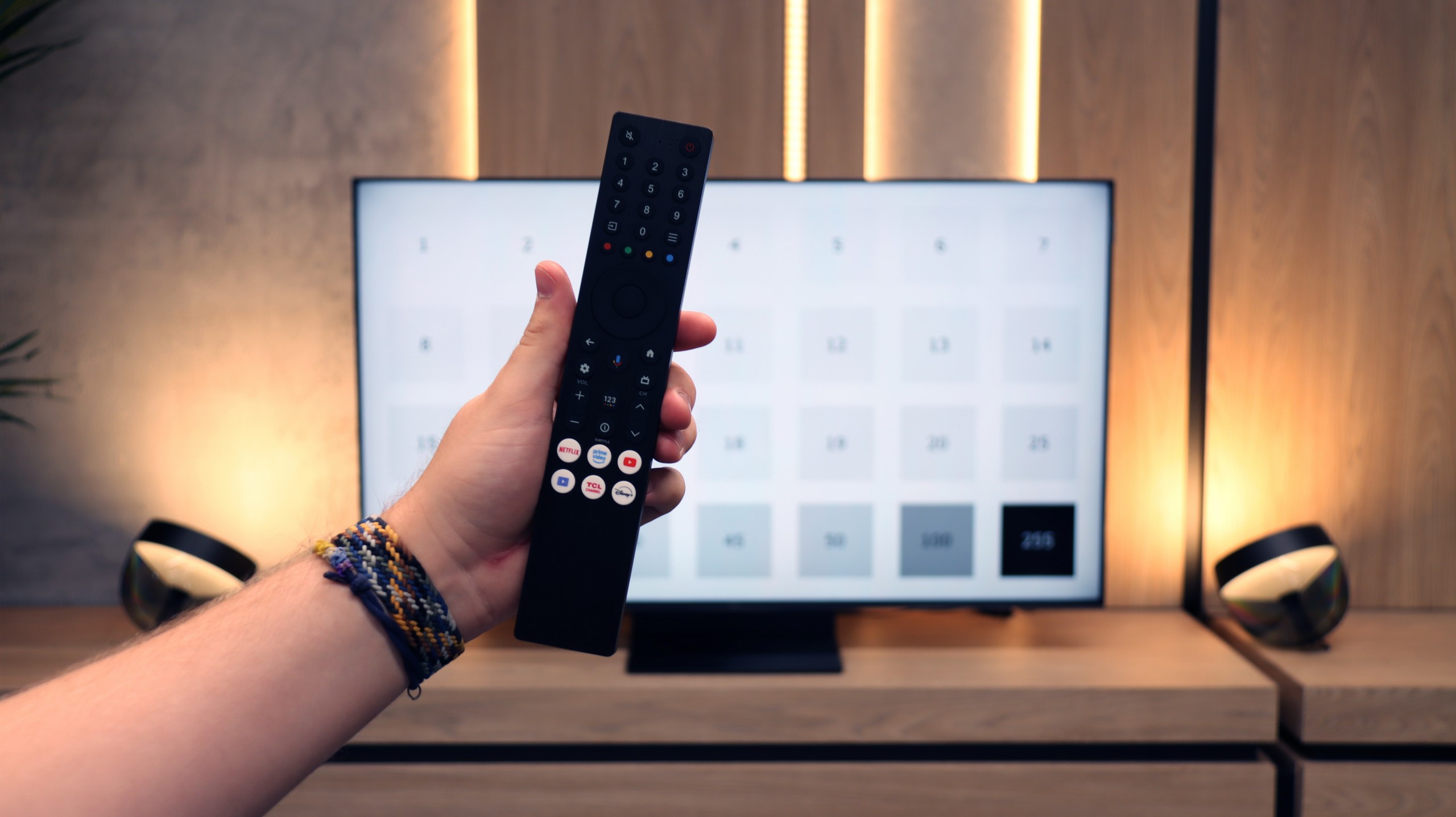
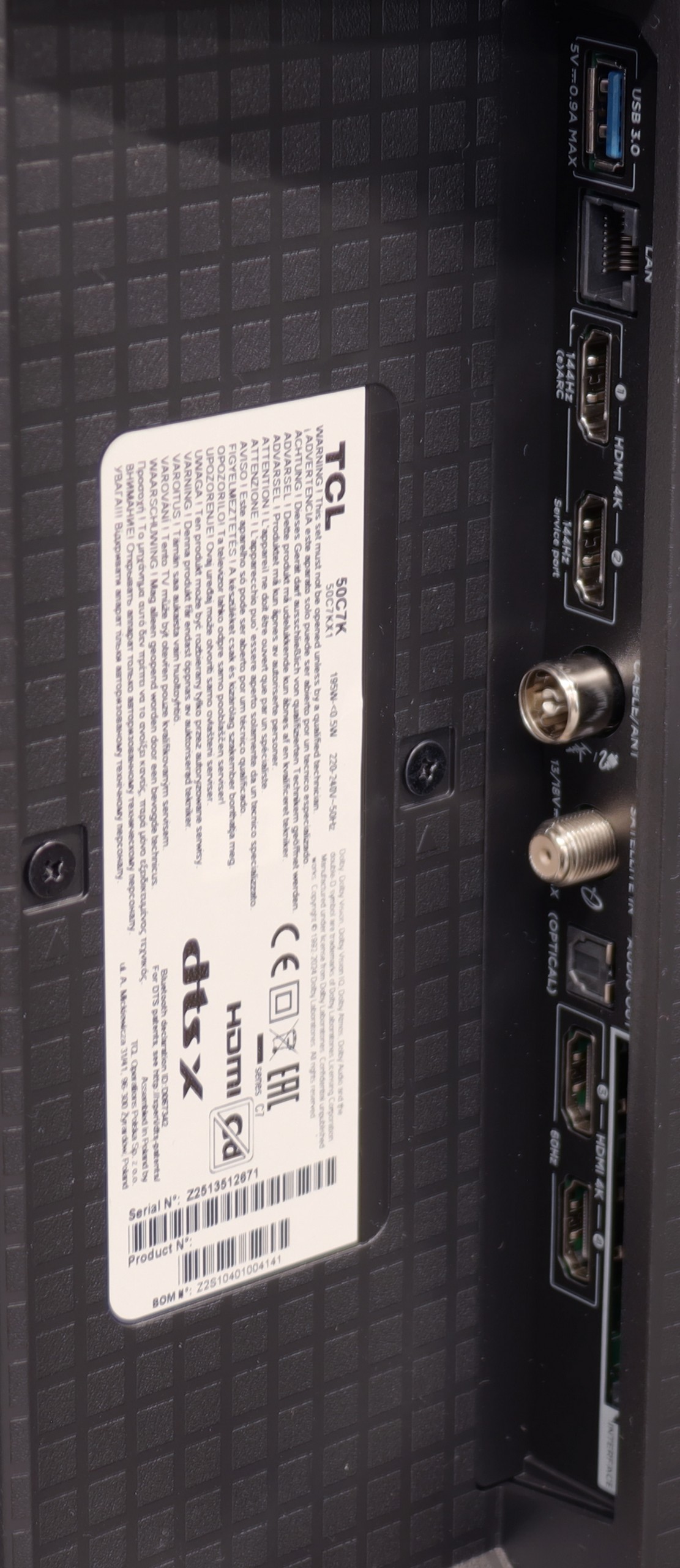




SmartTV: GoogleTV
The greatest strength of the TCL C7K in everyday use is undoubtedly the Google TV system. Thanks to it, we have access to an almost endless library of applications, including some more niche ones that are often unavailable on other platforms. The built-in Google Assistant understands Polish, so we can easily ask what’s on TV, what the weather is like, and even issue a few voice commands to control the television. The presence of Chromecast and AirPlay, which work smoothly and make life easier, is also a plus.
User Functions
On the downside, the classic features are somewhat lacking. Of course, we have the basics – teletext, EPG, and the ability to connect headphones – but that’s about it. There is no USB recording feature or picture-in-picture (PiP) mode, which can still be found among competitors. It’s also worth remembering that Google TV in the TCL edition can sometimes have strangely translated parts of the menu or minor errors in the interface. These are not things that interfere with daily use, but those sensitive to details may notice them.
User Functions
Let’s start with the basics, namely the classic functions of a television. The Philips OLED770 doesn’t rock the boat here; it has a standard EPG interface, the ability to connect devices via Bluetooth, and a few simple configuration options, including teletext. A curiosity is the presence of a jack connection, which has become quite rare these days. However, it will be appreciated by owners of older amplifiers or wired headphones. The remote control gives a good impression—it's ergonomic and has backlighting for the numeric keypad—but here too, there is a sense of a step back. It operates on infrared, so you have to aim at the television, and we would expect full wireless support by 2025. The exception is voice commands that use Bluetooth, but even here there is no cause for euphoria.
SmartTV Features – TitanOS
Speaking of voice, let’s move on to the Smart TV system, which largely defines the daily comfort of using a television today. Here, the OLED770 clearly falls behind the competition. TitanOS operates quickly enough that it’s hard to call it a disaster, but everyday use can be frustrating due to minor errors and shortcomings. Theoretically, we get support for AirPlay, but on the other hand, screen mirroring didn’t work at all in practice. Voice search? Yes, but only through Amazon Alexa and without support for the Polish language. In other words, the features exist, but when we try to use them, their utility turns out to be severely limited, even useless. And it is the Smart TV aspect that becomes the biggest hindrance for the OLED770. The picture can be breathtaking, gaming performs excellently, and Ambilight creates a unique atmosphere—yet when we move to everyday use of applications and services, we feel a sense of dissatisfaction.
Ambilight – Philips OLED770
While in terms of smart functionality, the Philips OLED770 is rather average, it has something in store that the competition genuinely envies. We are of course talking about the three-sided Ambilight system, which has been a hallmark of televisions from this brand for years. The LED lights positioned at the back of the casing dynamically illuminate the wall in colours matching what is currently happening on the screen. The effect is simple but very suggestive—the image seems to extend beyond the confines of the television, giving us the impression that the screen has suddenly grown by extra inches. During a film viewing, it can create an atmosphere, in games it enhances immersion, and during everyday television watching, it simply pleases the eye. It is this addition that makes, despite the limitations of TitanOS, the OLED770 have something that can attract attention and give it character.
Playing files from USB
9.2/10
8.5/10
Supported photo formats:
Maximum photo resolution:
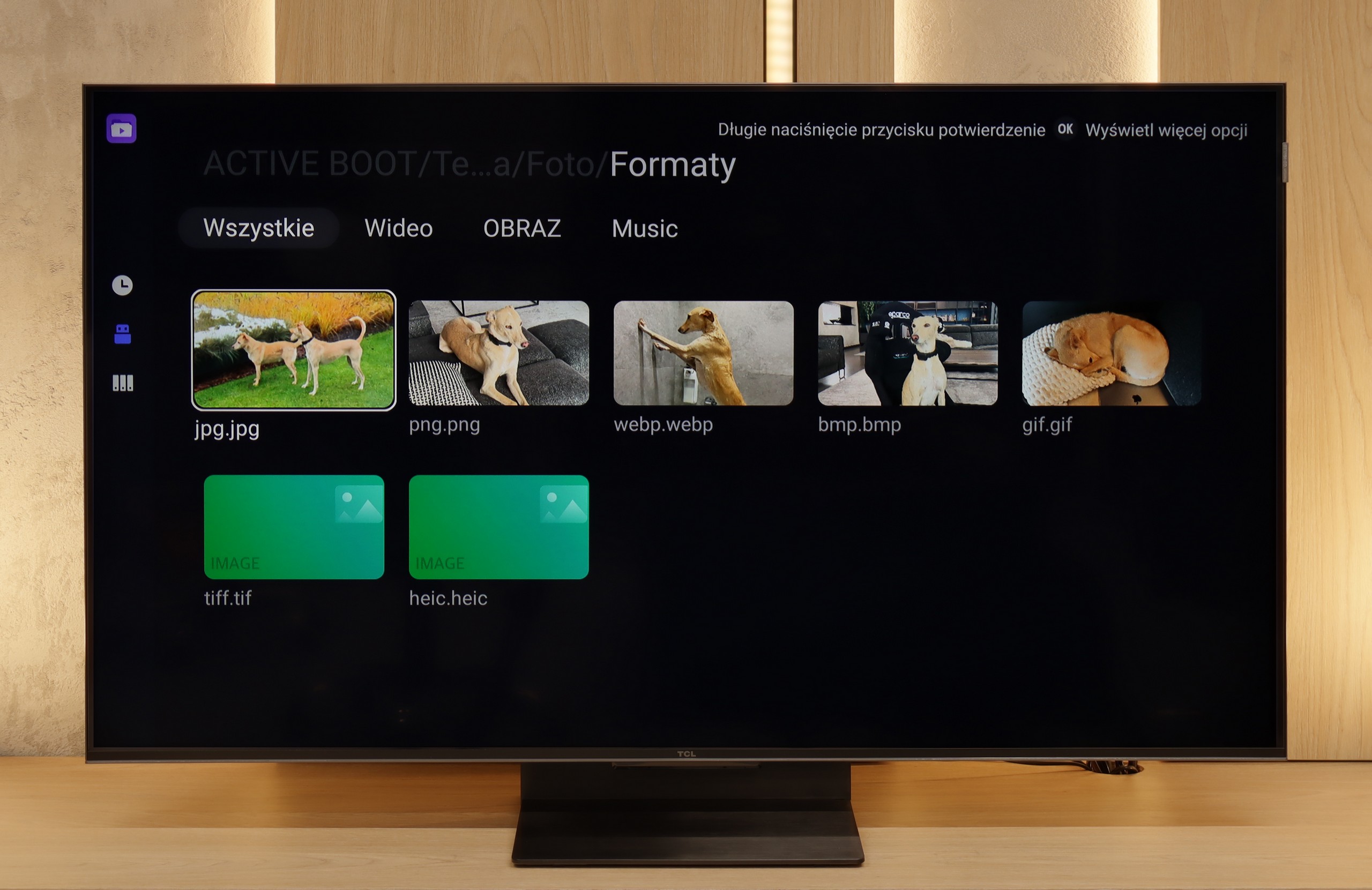

The built-in file player in the TCL C7K performs really very well. It supports most of the most popular audio and video formats, so if we want to quickly plug something in from a USB drive and play it – there should be no problem. Of course, as is usually the case, we can find some minor shortcomings – not every exotic codec will work (Apple's HEIC), not all subtitles will be perfectly synchronised (txt.). However, the biggest advantage of this television comes to the rescue, namely Google TV. Thanks to access to the Google Play store, we can easily install an alternative player, e.g. VLC, and then no files will be a concern for us.
The built-in media player in the Philips OLED770 works quite well, especially when it comes to subtitles – practically every format we tried was handled correctly, which will certainly please those watching films from their own library. However, there are some reservations regarding photo support. Not all resolutions are recognised, which may surprise users accustomed to viewing photographs from classic cameras or older memory cards. Other than that, everything works properly – it’s just worth ensuring that the television can manage the files we actually want to play on it.
Apps
9.6/10
6.7/10














































Sound
7/10
7/10
- Maximum volume76dB80dB
- Dolby Digital Plus 7.1
- Dolby True HD 7.1
- Dolby Atmos in Dolby Digital Plus (JOC)
- Dolby Atmos in Dolby True HD
- DTS:X in DTS-HD MA
- DTS-HD Master Audio
To be honest, we didn’t expect much from the sound of the 50-inch version of the C7K model. Typically, in such sizes, it’s hard to get anything more than thin, flat sound. But here – a pleasant surprise. The audio proved to be really enjoyable, with good clarity and even a slightly discernible bass. This is probably related to TCL's new collaboration with the Bang & Olufsen brand, which is a novelty for 2025. Whether the C7K actually uses the original transducers from the Danish premium brand – we cannot confirm. But the end result still deserves a thumbs up. For a television without a soundbar – it sounds quite pleasant.
In terms of sound, the Philips OLED770 performs quite well, although one shouldn’t expect strong bass. For regular television watching, streaming services, or series, its capabilities are fully sufficient – dialogues are clear, and the overall tonal balance is at a decent level. However, when we want to feel a real impact in cinematic productions or games, it quickly becomes apparent that there is a lack of solid low-end frequencies. In such a situation, a natural complement is an additional soundbar or audio system that allows you to make the most of the excellent picture.
On the plus side, versatility in handling formats is noteworthy. The OLED770 handles practically all popular codecs, including Dolby Atmos, DTS:X, and Dolby TrueHD. This means that when connecting external audio equipment, you can expect a full audio experience, even if the built-in speakers in the television do not create a spectacular impression.
Acoustic Measurements
76dBC (Max)
75dBC
80dBC (Max)
75dBC


